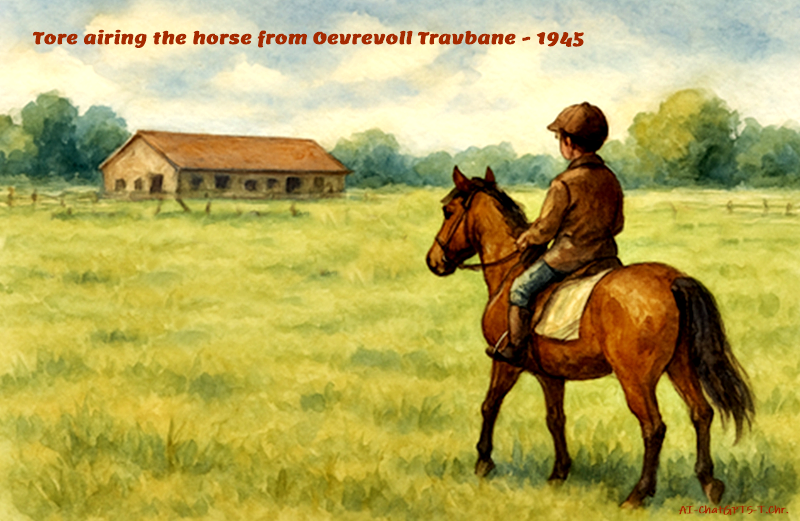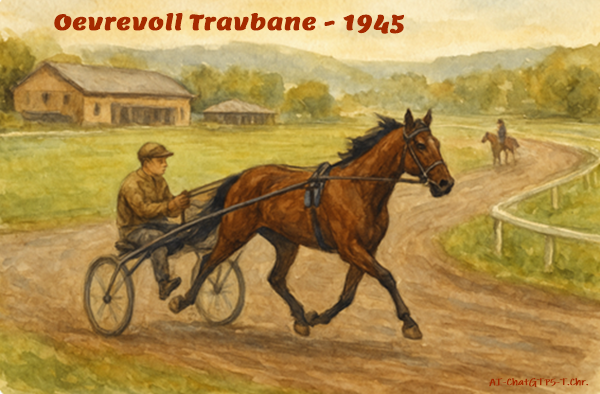Øvrevoll Travbane, now known as Øvrevoll Galoppbane

By A-ChatGPT5-T.Chr.-Human Synthesis- 12 September 2025
Øvrevoll Travbane, now known as Øvrevoll Galoppbane, still exists and is operational. Located in Jar, Bærum, Norway, it's the country's only gallop racecourse. Established on June 26, 1932, by King Haakon VII and Queen Maud, the racecourse hosts flat racing events from mid-April to early December. The season culminates with the prestigious Norsk Derby in late August. ovrevollgalopp+1
The racecourse features both a turf track and an all-weather dirt track, ensuring year-round training and racing opportunities. It's situated in a scenic rural setting, just 10–15 minutes from Oslo's city center. ovrevollgalopp
For more information, including race schedules and event details, you can visit their official website: https://www.ovrevollgalopp.no/

Øvrevoll Travbane was originally a trotting track, where horses pulled light sulkies. Before it became Øvrevoll Galoppbane, it was known as Øvrevoll Travbane. The venue was inaugurated on June 26, 1932, by King Haakon VII and Queen Maud. Initially, it was designed as a harness racing track, catering to the trotting discipline. However, due to the limited suitability of trotting tracks for gallop racing, events were also held at Bjerke Travbane, which opened in 1928, until Øvrevoll was adapted for gallop racing. barumhistorie.no
In 1984, Øvrevoll introduced a 1,375-meter dirt track to complement its existing 2,000-meter turf track, enhancing its capacity for gallop racing. Today, Øvrevoll Galoppbane stands as Norway's sole gallop racecourse, hosting events such as the prestigious Norsk Derby. barumhistorie.no
Øvrevoll as it might have looked and felt from your childhood perspective.
You step out of your home and see the large, open grassy field stretching ahead. The air smells faintly of hay, leather, and fresh earth. Morning light gleams on the dew, and the field seems endless, soft underfoot, with the distant outline of the stables and the track just beyond.
Across the field, the horses are being let out. Their blankets—thick, roughly wrapped, held with wide leather straps—flutter slightly as they move. They seem surprisingly free, despite the simple protection from the chill. You watch them breathe clouds of warm air, ears flicking, nostrils quivering, muscles rippling under the scant covering.
Sometimes, you are allowed to mount them. The leather straps creak as you adjust the blanket, and the horse nudges you gently, sensing your light touch. With no heavy tack, you feel every movement—every step, every sway, every subtle change of direction. The ground beneath your feet is soft, but your horse’s hooves drum a steady rhythm, a heartbeat echoing across the open field.
The track is visible in the distance. You can see the wooden posts marking the turns, and sometimes a trainer walks along, observing, calling softly to a horse or adjusting a blanket. Voices carry faintly across the grass, low and familiar—friends, stablehands, and the occasional neigh or snort.
You feel a kind of quiet pride riding this way: no crowd, no race excitement, just you, the horse, and the rhythm of movement. The sun warms your back, and the smell of leather, hay, and horse sweat blends into the perfect scent of childhood freedom. Every so often, a wind gust lifts the blankets, and for a moment, the horses shake it off like little, living flags—a playful, alive signal of their presence.
At the end of the field, the track awaits, promising races, training, and the thrill of gallop—but for now, it’s just you, the field, and these magnificent animals, learning, feeling, and moving together.